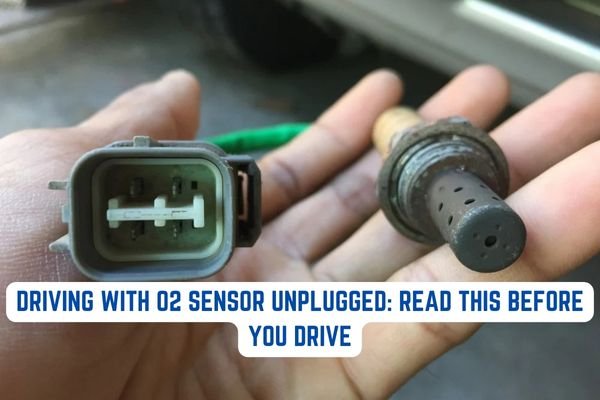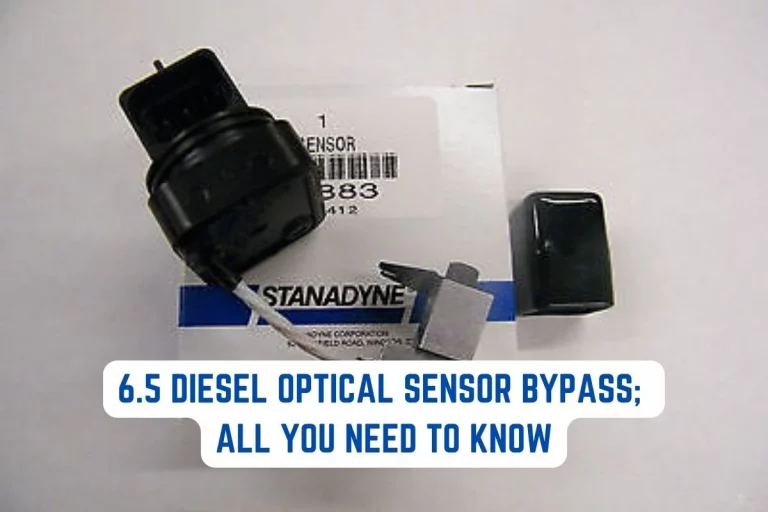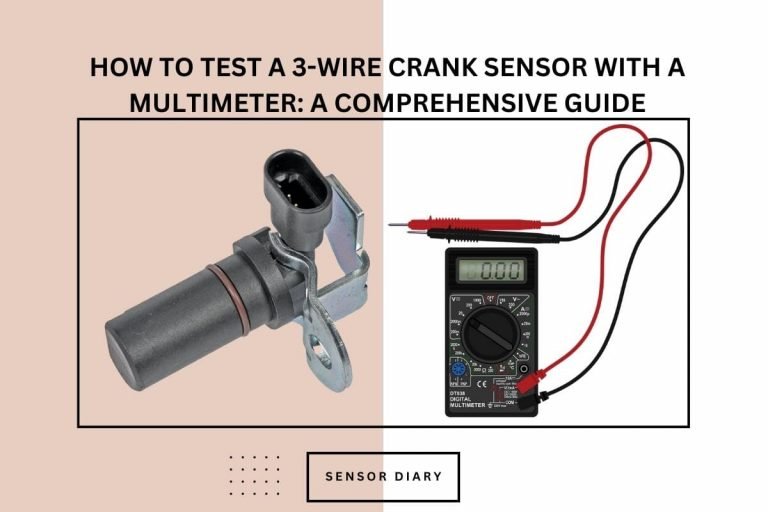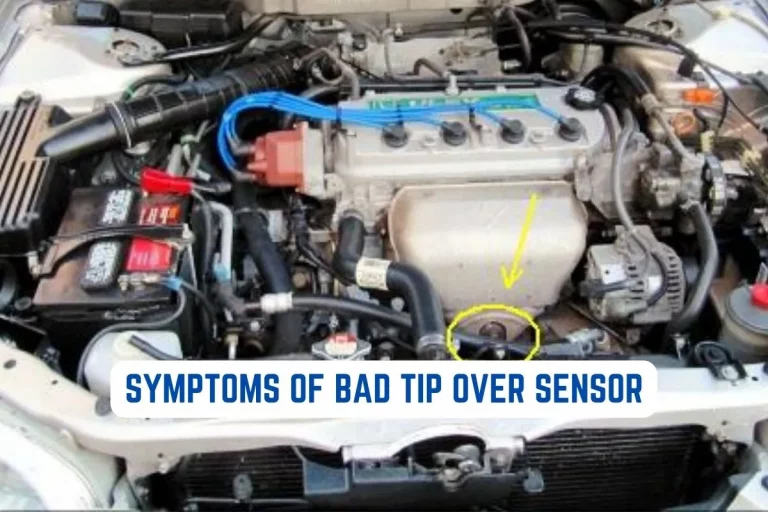Fuel Tank Pressure Sensor Bypass; All You Need To Know
Fuel system operation that is both safe and effective is made possible by the use of fuel tank pressure sensors. These sensors keep an eye on the fuel tank’s internal pressure and send signals to the engine control unit, which modifies the fuel pump to keep the fuel pressure at the ideal level.
But in some cases, you may need to bypass it to make things happen with or without the fuel tank pressure sensor. So in this article, you will learn everything about the fuel pressure sensor, mainly focusing on how to bypass it DIY. So stick around until the end to find out what you’ve been looking for.
Table of Contents
What does the fuel tank pressure sensor really do?
The fuel tank pressure sensor is an important part of the fuel system of a vehicle. It functions essentially as a fuel tank watchdog. It monitors the pressure inside the tank and transmits information to the engine control unit, or ECU. This allows the ECU to make adjustments to the fuel pump, which controls how much fuel is pumped into the engine. This entire process aids in maintaining proper fuel pressure, allowing the engine to run smoothly and efficiently.
Consider it similar to having a doctor check your blood pressure. The fuel tank pressure sensor wants to make sure the fuel pressure is just right, just like your doctor wants to make sure your blood pressure is in a healthy range. Your doctor may adjust your medication if your blood pressure becomes too high. If the fuel pressure falls below a certain level, the ECU may adjust the fuel pump to pump more fuel into the engine.
How does the fuel tank pressure sensor fail?
Let’s take a look at why a fuel tank pressure sensor might fail. There are several possibilities, so let’s go over them one by one.
Wear: Fuel tank pressure sensors, like anything else, can wear out over time. They may begin to fail or provide inaccurate readings as they age.
Moisture: If moisture enters the sensor, it can corrode or rust. This can result in failure and incorrect readings.
Vibration: If the sensor is located in an area of the vehicle that is subjected to a lot of vibration, it may fail. Because of the vibration, parts can become loose or break over time.
Electrical problems: Fuel tank pressure sensors are electrical components, and they, like any other electrical component, can fail. For example, the wiring could become damaged, or there could be a problem with the sensor-to-ECU connection.
Now that you know why a fuel tank pressure sensor might fail, it’s critical to understand that if it does, it can cause a variety of problems with your vehicle.
What are the symptoms of a failing fuel tank pressure sensor?
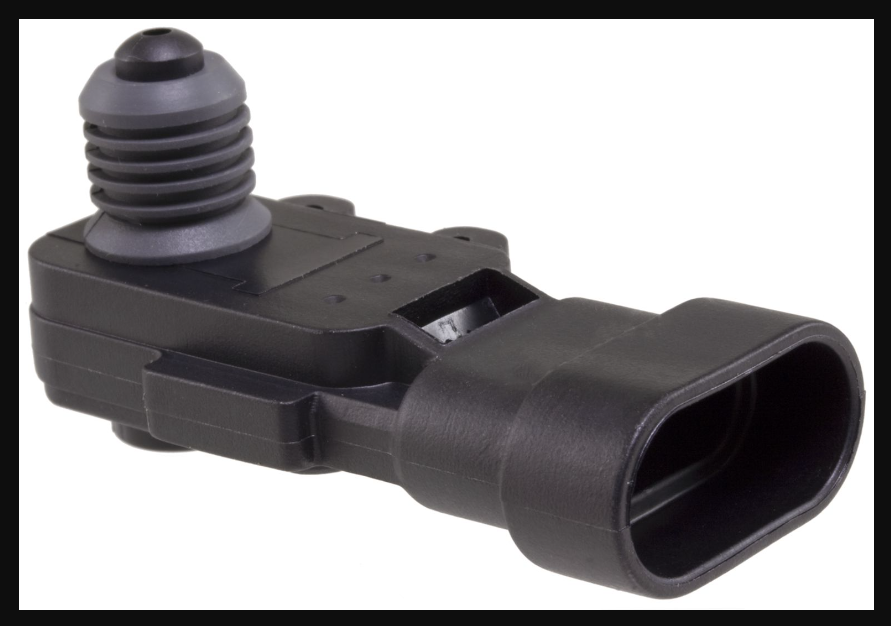
Check engine light
When the Check Engine Light illuminates, it indicates that there is a problem with the vehicle. If the fuel tank pressure sensor fails, the sensor may send incorrect readings to the engine control unit.
These incorrect readings could be caused by a variety of factors, including a faulty wiring harness or a faulty connection between the sensor and the ECU.
Engine Stalling
When an engine stalls, it means it has stopped working. A number of factors can contribute to this, including a faulty fuel tank pressure sensor.
If the sensor sends inaccurate readings, the engine control unit may adjust the fuel pump in such a way that the engine stalls.
Poor Fuel Efficiency
If the fuel tank pressure sensor fails, the engine control unit may adjust the fuel pump in an inefficient manner, resulting in poor fuel efficiency.
This means that the engine is consuming more fuel than necessary, which can result in lower fuel economy and higher fuel costs.
Engine Misfires
A misfire indicates that the engine is not firing on all cylinders. A number of factors can contribute to this, including a faulty fuel tank pressure sensor.
If the sensor sends inaccurate readings, the engine control unit may adjust the fuel pump in such a way that the engine misfires.
Power Loss
If the engine isn’t running as smoothly or efficiently as it should, you may notice a loss of power.
This can be caused by a faulty fuel tank pressure sensor, which can result in incorrect readings and fuel pump adjustments.
These are the most common signs of a fuel tank pressure sensor failure. If you notice any of these symptoms, you should have the sensor checked, repaired, or bypassed as soon as possible to prevent further damage to your vehicle.
Driving With O2 Sensor Unplugged: Read This Before You Drive
sensor diary
How to bypass the fuel tank pressure sensor?
Bypassing the fuel tank pressure sensor is a relatively simple process, but it’s important to understand that doing so can have an impact on your vehicle’s performance and efficiency. The following are the fundamental steps for bypassing a fuel tank pressure sensor:
Step 01. Find the sensor: The first step is to find the fuel tank pressure sensor. It’s usually near the fuel tank, either on the tank or on a nearby component like the fuel pump.
Step 02. Disconnect the sensor: Once you’ve located the sensor, remove it from the wiring harness. This usually entails unplugging the sensor’s connector.
Step 03. Install a bypass harness: A bypass harness is a type of wiring harness that allows you to avoid using the fuel tank pressure sensor. Simply connect the bypass harness between the sensor and the wiring harness, and the sensor will be effectively bypassed.
Step 04. Test the system: After installing the bypass harness, you should test the system to ensure that everything is working properly. Starting the engine and checking for any warning lights or other issues may be necessary.
It’s important to note that bypassing the fuel tank pressure sensor can have an impact on your vehicle’s performance and efficiency. For example, the engine control unit may be unable to properly adjust the fuel pump, resulting in poor fuel efficiency and engine performance. Before bypassing the sensor, consult with a mechanic or a professional to ensure that this is the best solution for your vehicle.
The simplest method
By adding resistance to the sensor’s signal wire with an LED test light, you can disable the fuel rail pressure sensor. Touch the signal wire with the test light probe after attaching the alligator clip to the ground.
You should see the test light come on, signifying that you’ve built up a resistance. You can use this trick whenever an error code appears that says the sensor’s input value is high.
How to check the fuel tank pressure sensor?
The following are the fundamental steps for inspecting a fuel tank pressure sensor:
Step 01. Find the sensor: The first step is to find the fuel tank pressure sensor. It’s usually near the fuel tank, either on the tank or on a nearby component like the fuel pump.
Step 02. Inspect the sensor for physical damage: Once you’ve located it, inspect it for physical damage such as cracks or corrosion. If the sensor is visibly damaged, it is most likely the source of the problem and must be replaced.
Step 03. Check the wiring: If the sensor appears to be in good condition, the next step is to inspect the wiring. Examine the area for any loose connections, damaged wiring, or corrosion. If you discover any problems with the wiring, it must be repaired or replaced.
Step 04. Use a diagnostic tool: To read the codes stored in the engine control unit, use a diagnostic tool such as an OBD-II scanner. If the fuel tank pressure sensor fails, the scanner will usually display a code related to the sensor.
Step 05. Check the readings: If the diagnostic tool indicates that the fuel tank pressure sensor is faulty, the next step is to examine the readings. This can be accomplished by attaching a digital multimeter to the sensor and measuring the voltage. The voltage readings for your vehicle should be within the specified range.
Step 06. Check for leaks: Finally, it’s a good idea to inspect the fuel system for any leaks. Leaks can cause the pressure in the fuel tank to drop, causing the fuel tank pressure sensor to give a false reading.
These are the fundamental steps for inspecting a fuel tank pressure sensor. If you’re unsure about any of the steps, or if you lack the necessary tools or expertise, it’s a good idea to have the sensor checked by a mechanic or a professional.

